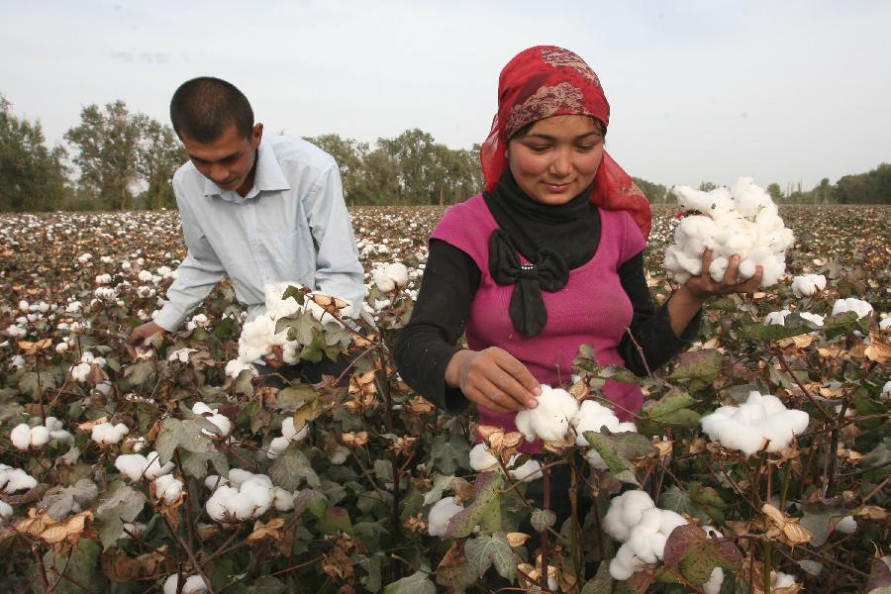After the outbreak of COVID-19 pandemic worldwide, the market has expected that Chinese and global cotton consumption is supposed to fall sharply in 2019/20 season, and cotton futures market has shown this expectation. Later, after experiencing the most panic period, some views come out that despite of the obvious year-on-year decline, with the pandemic under control, the monthly growth rate of consumption may move with gradual improvement. Then, with the coming new crop year after next two months, is the decrement of cotton consumption within your expectation? Will the consumption improve month on month? We will analyze the cotton consumption situation from the slightly delayed end-user consumption, the domestic cotton consumption assessed by CCFGroup and the current operation of the industry chain.
The first is the performance of end-user consumption. In May, the retail sales value of apparel, shoes, hats and knitted textiles decreased only by 0.6% year-on-year, which was significantly lower from the year-on-year decline of February to April, and the situation was indeed under improvement month on month. Of course, retail sales value in May also included the demand that has been lagging in the previous months.

Then look at the end-user consumption related to export. In May, China's textile export value increased by 77.3% year-on-year, and exports of apparels decreased by 26.9% year-on-year. From January to May, China's textile exports moved up by 21.3% year-on-year, while exports of apparels declined by 22.8% year-on-year. Textile exports include medical products, such as face masks, and the export of such products has grown significantly, which has led to a significant year-on-year increase in textile export data; while apparel export data is closer to the situation of the cotton textile industry. It can be seen that the export situation of apparels is still not optimistic, which is also in line with the situation we investigate. The foreign orders have been cancelled and delayed by a large number in mid-March. Since then, the foreign orders have been re-executed, and small orders have been concluded. However, the volumes are small overall, and the continuity is unstable.

According to CCFGroup, from September 2019 to May 2020, China's cotton consumption is estimated at 5.44 million tons, a decrease of 890,000 tons from the same period of last year, down about 14%. It can be seen that the yearly decrement of China's cotton consumption in the past three months has narrowed gradually. In June-August 2019, the cotton consumption was relatively low affected by traditional slack season and Sino-US trade war, so the consumption this year during the period may see no significant fall.

Looking at the operation status of the cotton textile industry at present, the slack atmosphere continues to cover on the market, and the grey fabric market is worse than that of the cotton yarn market. Weaving plants have cut operating rate in order to control the accumulating inventory. Some weaving plants in North China have already suspended operation for holiday and many of them plan to have Dragon Boat Festival holiday. The cotton yarn plant operating rate is stable temporarily, but the conventional combed cotton yarn has cut prices to sell in some regions. Zhengzhou cotton futures market has bottomed out gradually, and basis of on-call cotton continues to rise, for downstream spinning mills, they are hard to gain profits.

In general, from September 2019 to May 2020, China's cotton consumption is estimated at 5.44 million tons, a decrease of 890,000 tons from the same period of last year, down about 14%, according to CCFGroup, In June-August 2019, the cotton consumption was relatively low affected by traditional slack season and Sino-US trade war, so the consumption this year during the period may see no significant fall. However, cotton yarn inventory is accumulating, and export orders have not recovered well. The potential risks exist. Currently, the downstream situation in the first half of June is worse than that in May. Operating rate of weaving plants continues to reduce, and many weaving plants plan to have holiday for Dragon Boat Festival. The cotton yarn plant operating rate is stable temporarily, but the conventional combed cotton yarn has cut prices to sell in some regions. According to CCFGroup, China's cotton consumption is projected at 7.15 million tons in 2019/20 season, down 12% from last season. |






